Text
学術論文 データの二重出版と断片的出版
学術研究は、その成果を他の研究者と共有されて初めて完了したと言うことが出来ます。 私たちの業界(職種)では、学会発表で研究を終了してしましい、学術論文にされていな研究データがかなりの数存在することを肌感覚として実感しています。 今回のテーマは学術論文に関連するデータの二重出版と断片的出版についてです。 はじめに 学術論文は、学術上の記録です。そのため報告された文献はそれぞれ独立した研究成果を正確に反映しているものでなければなりません。したがって、データの二重出版と断片的出版はこの目的を脅かす者なのです。ここでいう二重出版は、同じデータ・同じ考えを2つの別の情報源として出版すること、断片的出版は1つの研究成果から得られたものに不必要な分割を行って複数の論文とすることです。 二重出版 基本的に、すでに公開されている学術論文を、再度オリジナルのものとして他の雑紙に投稿する事です。 …
View On WordPress
2 notes
·
View notes
Text
Data Availability Statement informationとは
Data Availability Statement informationとは
Data Availability Statement informationってなに?? Data Availability Statementは、論文に関連する研究データが利用できる場所と、データにアクセスできる条件を読者に通知することです。 また、データセットへのリンク(該当する場合)も含まれています。 つまり、読者が論文内容の再検討時、メタデータの提出方法、依頼方法を論文内に記載することを示します。 Journal of Occupational Healthは必修事項 昨日、”A multicenter study of radiation doses to the eye lenses of clinical physicians performing radiology procedures in…

View On WordPress
0 notes
Text
医療統計学 平均値と中央値の使い分け
論文作成時に平均値と中央値のどちらを使用して論文を作成しますか? 多くの学会発表や論文でその集団の特性を示す代表値として平均値±標準偏差(SD)が使用されています。一方で平均値 ± SDではなく、中央値と範囲(最小値ー最大値)や四分位範囲が用いられることもあります。私たちは子供の頃から平均値に慣れ親しんできたので、多くの人が平均値を使用しますが、平均値と中央値にはその使い方に違いがあります。 基本的な考え方 平均値は基本的にはデータが正規分布に従う場合に用いる集団の代表値で、正規分布しないデータには中央値を使うのが一般的です。時々、論文中で平均値±SDと中央値[四分位範囲」が使い分けわれているのは、そのデータが正規分布しているかどうかによって代表値を使い分けているものと考えられます。 平均値 その集団のばらつきを示す場合に平均値であれば標準偏差(SD) 表記方法 平均値 ±…

View On WordPress
0 notes
Text


春ですね
#xt2 #fujifilm #ricoh #rikenon
...........................................................
Camera: Fujifilm X-T2
Lens : 35 mm F1.4
f/8 75mm 1/250 secs iso:25600
.……....…............…..............................
...........................................................
Camera: Fujifilm X-T2
Lens : 35 mm F1.4
f/8 75mm 1/ iso:100
.……....…............…..............................
5 notes
·
View notes
Text



Spring has come
春ですね
...........................................................
Camera: Fujifilm X-T2
Lens : 35 mm F1.4
f/8 75mm 1/1600 iso:100
.……....…............…..............................
1 note
·
View note
Text

Country road
...........................................................
Camera: Fujifilm X-T2
Lens : 35 mm F1.4
f/8 75mm 1/1600 iso:100
.……....…............…..............................
4 notes
·
View notes
Text

Good morning
#japan#photography#travel photography#black and white#japanstyle#fuji acros#fujifilm#fujicolor#xt2#ricoh#rikenon
4 notes
·
View notes
Text





The Hinamatsuri is an annual event in Japan that prays for the healthy growth of girls.
...........................................................
Camera: Fujifilm X-T2
Lens : 35 mm 1.4
f/1.4 55 mm 1/250 iso:800
.……....…............…..............................
#japan#photography#travel photography#black and white#japanstyle#雛祭り#photoshoot#photoblog#fuji acros#fujifilm#fujicolor#xt2
1 note
·
View note
Text




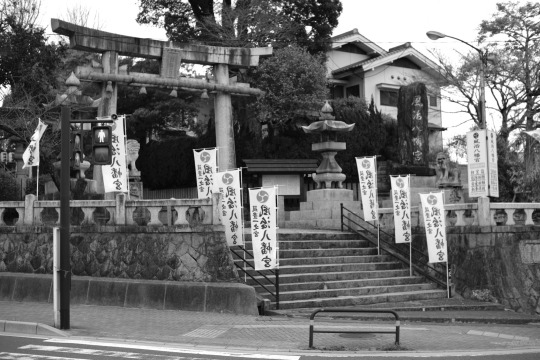
These pictures are Japanese landscape.
It's a Japanese shrine.
...........................................................
Camera: Fuji film X-T2
Lens : 35 mm 1.4
f/1.4 55 mm 1/600 iso:100
.……....…............…..............................
#japan#japanstyle#shrine#black and white#photoshoot#photoblog#photography#fujifilm#fujicolor#fuji acros#acros100#x t2
2 notes
·
View notes
Text





A shrine (Jinja Kamuyashiro) is a ritual facility based on the belief in Shinto, a religion peculiar to Japan. The gods of origin, Tenjin Jigen, the ancestral gods of the imperial family and clans, and spirits such as great men and righteous men are enshrined as gods. According to the materials of the Ministry of Education, Culture, Sports, Science and Technology, there are about 85,000 shrines all over Japan. Including tens of thousands of unregistered small shrines, there are more than 100,000 shrines throughout Japan.
#landscape#nature#japan#japanstyle#shrine#black and white#travel photography#photography#photoblog#photoshoot#fuji acros#acros100#fujifilm#fujicolor
3 notes
·
View notes
Text

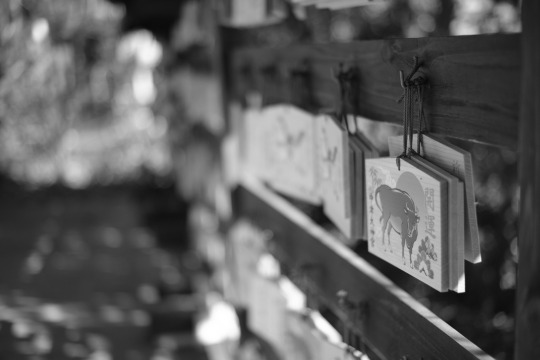
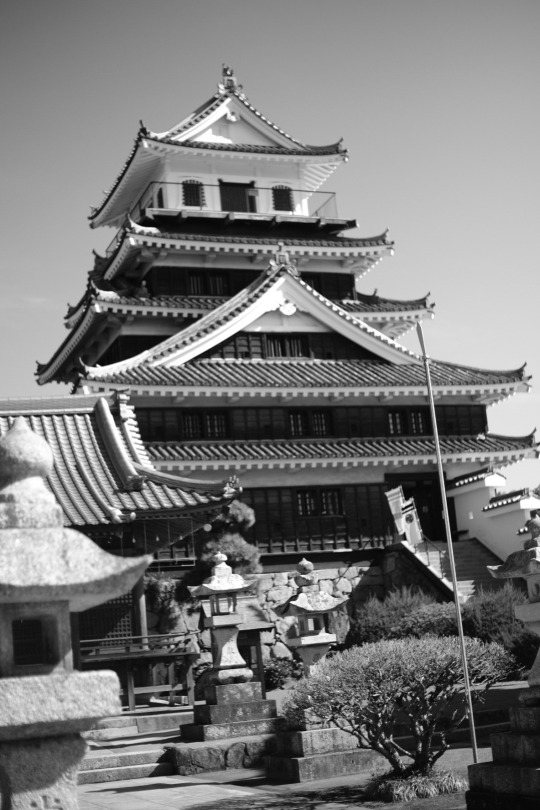

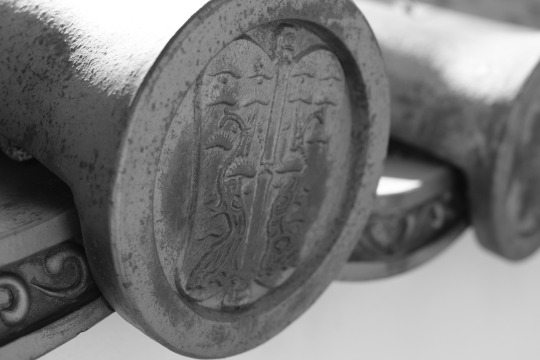
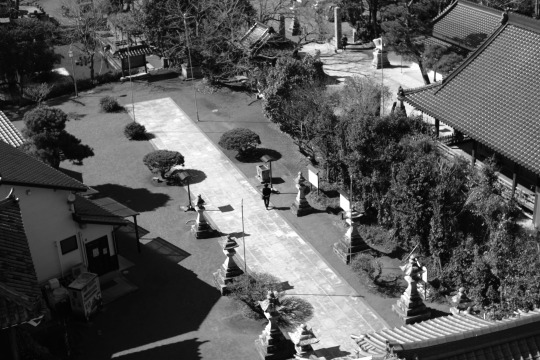


In 1575 (third year of Tensho) the Okudaira family, which up until then had existed as one of the smaller wealthy samurai families in Mikawa's mountainous region, would become known throughout Japan.
It began with the Battle of Nagashino on the plain of Shitaragahara, in which the Oda and Tokugawa allied forces expelled and destroyed the forces of Takeda, in a ferocious battle that is said to have forever changed Japanese history. The sacrifice made by Okudaira retainer Torii Suneemon prompted Oda Nobunaga to award highest military honors upon the next generation Okudaira family member, Okudaira Sadamasa.
At this time, Nobunaga awarded Sadamasa with a single letter of his name: 'Nobu,' and thereafter he became known as 'Nobumasa.' Further, Nobumasa became wed to Tokugawa Ieyasu's eldest daughter, Princess Kame, and proceeded to make several great military achievements befitting of a legendary warrior, taking no shame in the name of son-in-law, and contributing greatly to the creation of Tokugawa's new bakufu government. Nobumasa's children, starting with Iemasa, would strive and succeed in living up to his achievements. The Okudaira family managed to consolidate their distinguished position tied with the Tokugawa as hereditary vassals.
Many years passed, until 1717, the second year of the Kyoho era. The eighth Tokugawa Shogun Yoshimune, who had only just taken up his post the previous year, was driving for a reformation of the shogunate. Desiring greater control of West Japan, he requested Masashige, 7th generation Okudaira, to reside in Nakatsu Castle in the Buzen Province. This meant a promotion and increase from his previous dominion of Miyazu, Tango Province by 10,000 koku, to a total 100,000 koku. Yoshimune was the great-grandchild of Ieyasu, and he is said to have worshipped his exalted great-grandfather constantly. He even modeled his own government on Ieyasu's political method, stating: "All matters are settled according to Gongen-sama (Ieyasu)." He must have held high expectations of Okudaira Masashige, who shared the same Tokugawa blood.
There followed many great and wise Okudaira leaders, notably Masataka, 11th generation Okudaira, who contributed to the advancement of Dutch studies in Japan. The Okudaira continued to live in Nakatsu castle and watch over the castle town for 154 years until 1871 (fourth year of Meiji) when the 15th generation Okudaira Masayuki met with the abolition of the han system. At the time of the abolition of the han system, almost all buildings inside the castle were completely destroyed. Only the palace was preserved as a Nakatsu office building in Kokura Prefecture.
However, during the Satsuma Rebellion in 1877 (tenth year of Meiji), the palace also burned down. After the War and political turmoil arising from Japan's defeat, the former feudal lords of the Okudaira became the center of power in 1964 (39th year of Showa), and together with donations from the citizens of Nakatsu they built a castle tower.
Since then, the new castle has lasted through the Showa and Heisei periods as both a symbol of pride and as a sight-seeing area for visitors to Nakatsu city.
Now, in 2011, fuelled by the company charged with upholding the spirit of the Okudaira clan, newly-emerged Nakatsu Castle (Museum of the Okudaira) starts its new life holding a variety of events and projects for the citizens of Nakatsu city.
#japanstyle#japan#travel photography#photography#castle#japancastle#fuji acros#acros100#fujicolor#fujifilm#xt2
2 notes
·
View notes
Text
Japanese landscape




In 1575 (third year of Tensho) the Okudaira family, which up until then had existed as one of the smaller wealthy samurai families in Mikawa's mountainous region, would become known throughout Japan.
It began with the Battle of Nagashino on the plain of Shitaragahara, in which the Oda and Tokugawa allied forces expelled and destroyed the forces of Takeda, in a ferocious battle that is said to have forever changed Japanese history. The sacrifice made by Okudaira retainer Torii Suneemon prompted Oda Nobunaga to award highest military honors upon the next generation Okudaira family member, Okudaira Sadamasa.
At this time, Nobunaga awarded Sadamasa with a single letter of his name: 'Nobu,' and thereafter he became known as 'Nobumasa.' Further, Nobumasa became wed to Tokugawa Ieyasu's eldest daughter, Princess Kame, and proceeded to make several great military achievements befitting of a legendary warrior, taking no shame in the name of son-in-law, and contributing greatly to the creation of Tokugawa's new bakufu government. Nobumasa's children, starting with Iemasa, would strive and succeed in living up to his achievements. The Okudaira family managed to consolidate their distinguished position tied with the Tokugawa as hereditary vassals.
Many years passed, until 1717, the second year of the Kyoho era. The eighth Tokugawa Shogun Yoshimune, who had only just taken up his post the previous year, was driving for a reformation of the shogunate. Desiring greater control of West Japan, he requested Masashige, 7th generation Okudaira, to reside in Nakatsu Castle in the Buzen Province. This meant a promotion and increase from his previous dominion of Miyazu, Tango Province by 10,000 koku, to a total 100,000 koku. Yoshimune was the great-grandchild of Ieyasu, and he is said to have worshipped his exalted great-grandfather constantly. He even modeled his own government on Ieyasu's political method, stating: "All matters are settled according to Gongen-sama (Ieyasu)." He must have held high expectations of Okudaira Masashige, who shared the same Tokugawa blood.
There followed many great and wise Okudaira leaders, notably Masataka, 11th generation Okudaira, who contributed to the advancement of Dutch studies in Japan. The Okudaira continued to live in Nakatsu castle and watch over the castle town for 154 years until 1871 (fourth year of Meiji) when the 15th generation Okudaira Masayuki met with the abolition of the han system. At the time of the abolition of the han system, almost all buildings inside the castle were completely destroyed. Only the palace was preserved as a Nakatsu office building in Kokura Prefecture.
However, during the Satsuma Rebellion in 1877 (tenth year of Meiji), the palace also burned down. After the War and political turmoil arising from Japan's defeat, the former feudal lords of the Okudaira became the center of power in 1964 (39th year of Showa), and together with donations from the citizens of Nakatsu they built a castle tower.
Since then, the new castle has lasted through the Showa and Heisei periods as both a symbol of pride and as a sight-seeing area for visitors to Nakatsu city.
Now, in 2011, fuelled by the company charged with upholding the spirit of the Okudaira clan, newly-emerged Nakatsu Castle (Museum of the Okudaira) starts its new life holding a variety of events and projects for the citizens of Nakatsu city.
1 note
·
View note
Text
EndNote basicを用いて最適な投稿ジャーナルを決定する方法
論文投稿の悩みとして投稿先をどこにするか悩んだことはありませんか? 投稿した先の雑誌がハゲタカジャーナルであったり、そもその分野違いであったりすることが多々あります。 ハゲタカジャーナルの有無を調べるには以前紹介した方法を用いることで回避できるかと思います。 https://www.capablog2020.com/2020/08/29/%e3%83%8f%e3%82%b2%e3%82%bf%e3%82%ab%e3%82%b8%e3%83%a3%e3%83%bc%e3%83%8a%e3%83%ab%e3%81%ab%e5%b7%bb%e3%81%8d%e8%be%bc%e3%81%be%e3%82%8c%e3%81%aa%e3%81%84%e3%82%88%e3%81%86%e3%81%ab%e3%81%99%e3%82%8b/ 今回は、abstractとendnoteのレファレ…

View On WordPress
0 notes
Text
卒論や修論、投稿論文にも使用できる無料文献管理ツールEndNote Basicの使用方法について
EndNote Basicは無料で使用できる文献管理ツールです。投稿論文に用いる引用文献は数十個程度使用することはよくあることですが、雑誌の投稿規定に沿って記載することは時間と労力を非常に消費します。また、文献を一つ追加したために、番号を振り直す作業もあり引用のミスに繋がる恐れがあります。 これははっきり言って無駄な時間です。 そこでEndNoteを使用することで、これらの作業を簡便かつ迅速に行うことができます。 今回は有料で使用するデスクトップ版ではなく、無料で使用することができるEndNote…

View On WordPress
0 notes
Text
新型コロナウイルス感染爆発防止のために私ができることのロゴ
新型コロナウイルス感染爆発防止のために私ができることのロゴ #covid19
Stay home to save lives
新型コロナウイルス (Covid-19) 感染爆発防止のために私ができること
昨日、新型コロナウィルス(Covid-19)が発見され一年が経ちました。
現在日本は、第3波がやってきています。特に、この数日間のコロナ対応で、壊れていく、または去っていく医療従事者の話をさらに聞くようになりました。
私自身も日々の放射線診療業務の中で、Covid-19陽性患者と接する機会が増えてきている感じます。
しかし、これがSNSではフェイクではないかという意見もあったり、実態がつかみにくいのですが。
新型コロナウイルス感染爆発防止のために私ができることのロゴ
私が所属している日本産業衛生学会のメーリングリストより「新型コロナウイルス感染爆発防止のために私ができることのロゴ」のご紹介があったので、この記事にてリンクを…
View On WordPress
0 notes
Text
論文の再投稿 (Tacked chaged) 原稿作成にword機能を用いた方法
投稿論文の再投稿であるreviseの原稿を作成する場合、2つのwordファイルを作成することが必要であることを前回の記事でご紹介しました。その2つのファイルとは、
査読者から指摘された箇所を修正したファイル (Clean)
査読者から指摘された箇所の修正箇所を明示したファイル(Check)
https://www.capablog2020.com/2020/11/28/%e8%ab%96%e6%96%87%e3%81%ae%e5%86%8d%e6%8a%95%e7%a8%bftacked-chaged%e6%99%82%e3%81%ae%e8%bf%94%e4%bf%a1%e6%96%b9%e6%b3%95%e3%81%ab%e3%81%a4%e3%81%84%e3%81%a6/
今回の記事は、MS…
View On WordPress
0 notes
Text
SAS University Editionの提供終了??のお知らせがやってきた
https://www.capablog2020.com/2020/05/20/sas-university-edition/
先日SASからユーザーに対してメールがやってきました。
SAS University Editionをダウンロードいただいた皆様に、SAS University Editionに関する今後の変更点についてご連絡を差し上げます。
SAS University Editionで使用しているサードパーティ製プラットフォームのサポートが2020年11月に終了します。SAS University Editionは2021年4月30日まで当社のウェブサイトからダウンロードできます。SASは、2021年7月まで、University Editionへのアクセス、技術サポート、カスタマーサポート、カリキュラムサポートを継続的に提供します。
つまり、2…
View On WordPress
0 notes